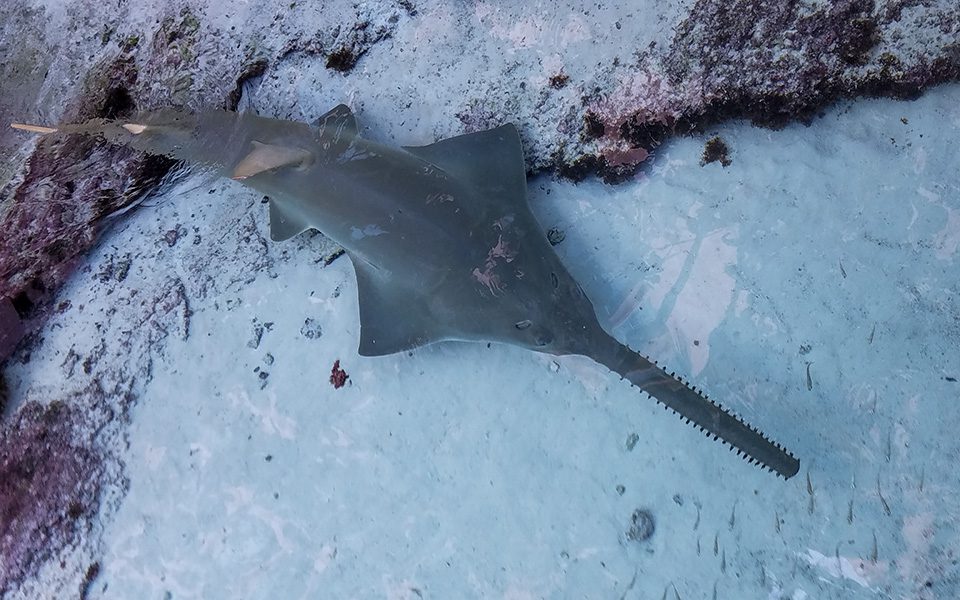
Since early November, when the first reports came in from the Florida Keys, scientists have been looking into reports of fish exhibiting abnormal behavior referred to as “the spins.” Bonefish & Tarpon Trust (BT&T) recently pointed its finger at harmful algae as a likely reason for this phenomenon that has killed at least 16 endangered sawfish and affected fish of 30 different species.
Fish with the spins lose equilibrium and swim upside down in circles, often following a stressful or stimulating event. According to BT&T, a majority of reports for this behavior originated in the Lower Keys, between Big Pine Key and Sugarloaf Key, but there have been reports farther west toward Key West as well as in Miami north of Biscayne Bay National Park. Among the species affected are popular sport and food fish such as tarpon, permit, snook, jack crevalle, mutton snapper, mangrove snapper, cubera snapper, goliath grouper and redfish.
In January, BT&T and the Lower Keys Guides Association launched a study with the assistance of numerous other organizations to determine the cause of these events. BT&T stopped short of calling its results conclusive, because there’s still testing to be done, but they indicated occurrences of harmful algae blooms in the gambierdiscus family are the likely culprit.
Saltwater anglers will likely be familiar with ciguatera poisoning caused by the accumulation of ciguatoxin in predatory food fish. Gambierdiscus is known to produce ciguatoxin and other neurotoxins that can have different effects on human and marine life. BT&T in not yet sure whether this variant of gambierdiscus is producing any cytotoxin that would move up the food web, but evidence indicates it is such a toxin that is affecting fish.
These harmful algae are more common in reef areas that are environmentally stressed, according to BT&T. Testing continues and should hopefully provide more insight into this algae’s potential impact to the fisheries.
For more information, go to bonefishtarpontrust.org.